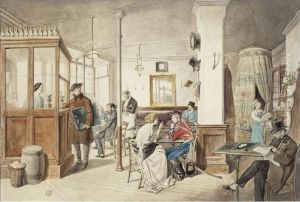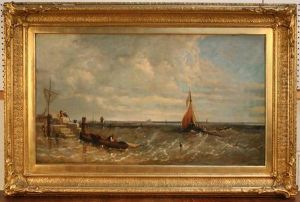Raphael Jacquemin Paintings
Raphael Jacquemin was a French printmaker, illustrator, and art historian born in 1821. Although not as widely recognized as some of his contemporaries, Jacquemin made significant contributions to the study and documentation of historical costume and fashion, which was a relatively new field of study in the 19th century.
He is best known for his work 'Iconographie générale et méthodique du costume du IVe au XIXe siècle (315-1815),' a comprehensive collection of costume designs that spanned numerous centuries. This work, which was published in parts from 1863 to 1869, was a monumental achievement that showcased the evolution of European fashion. It served as a valuable resource for artists, designers, and historians alike. Jacquemin's attention to detail and his dedication to the accuracy of his representations of historical dress were instrumental in the development of costume history as a serious discipline.
In addition to his contributions to the study of costume, Jacquemin was an accomplished printmaker and illustrator. His artistic output included engravings and lithographs that illustrated various subjects, including scenes from history and everyday life. His illustrations often accompanied texts, providing visual context and embellishment to written works.
Though he lived through a period of great artistic innovation, including the rise of Impressionism, Jacquemin remained focused on his niche, which was rooted in historical representation rather than avant-garde expression. He maintained a commitment to the didactic aspect of art, using his skills to educate and inform.
Raphael Jacquemin's work provides an important visual record of historical fashion, reflecting the tastes, materials, and techniques of bygone eras. His efforts paved the way for future studies in costume history and influenced the way historical accuracy would be treated in stage and film productions.
Jacquemin's death in 1898 marked the end of a career that had spanned much of the 19th century, a period of dramatic change and development in the arts. Despite not being a household name, his legacy lives on through the rich visual documentation he left behind, which continues to be a valuable resource for those interested in the history of fashion and costume.

